Balance equipment prevents falls by forcing your body to constantly micro-adjust on unstable surfaces, which activates deep stabilizer muscles that stay dormant during regular workouts. You’ll develop better proprioception and faster reflexes as your brain learns to communicate more effectively with your muscles. This training improves your coordination and spatial awareness, reducing fall risk by up to 30%. There’s fascinating science behind how this technology creates such dramatic improvements.
How Balance Equipment Enhances Stability and Coordination
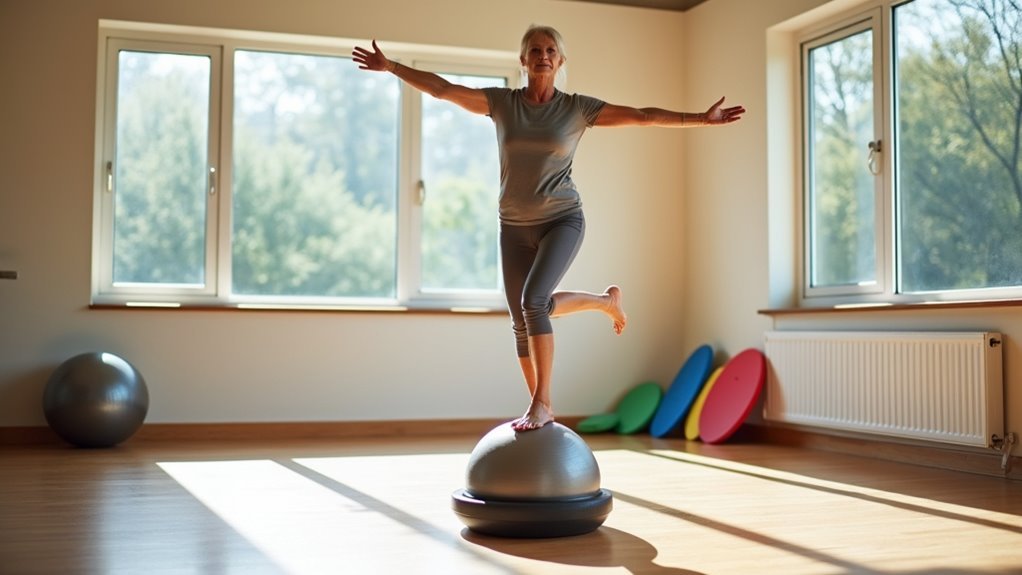
Although traditional exercise focuses on stable surfaces, balance equipment deliberately introduces controlled instability that transforms how your body responds to movement challenges.
When you use wobble boards or balance balls, you’re activating stabilizer muscles that rarely engage during conventional workouts. This constant adjustment enhances your coordination and proprioception—your body’s ability to sense position in space.
Dynamic balance training with this equipment improves neuromuscular communication, creating faster reflexes when you encounter unexpected movements.
Balance equipment trains your nervous system to react faster and more efficiently to sudden movement challenges.
You’ll receive real-time feedback about your stability, allowing immediate corrections that build functional mobility over time. Research shows this approach can reduce fall risk by up to 30%.
Personalized training programs incorporating balance equipment target your specific weaknesses, systematically improving your body’s natural defense mechanisms against falls.
The Science Behind Balance Training Technology
While balance equipment provides the physical foundation for stability training, the technology behind these tools operates on sophisticated biomechanical principles that target your body’s most fundamental movement systems.
Balance training technology uses dynamic balance assessment to identify your specific deficits, enabling targeted interventions that address your unique needs.
Here’s how the science works:
- Real-time feedback systems measure your postural sway and weight distribution, providing immediate corrections.
- Adaptive difficulty algorithms create personalized challenges that progressively improve your neuromuscular coordination.
- Movement pattern analysis tracks your static and dynamic balance improvements over time.
Interactive training programs considerably reduce fall risk through evidence-based interventions that enhance mobility and independence.
This technology-driven approach guarantees you’re receiving scientifically proven methods tailored to your specific balance requirements.
Real-Time Feedback Systems for Fall Risk Reduction
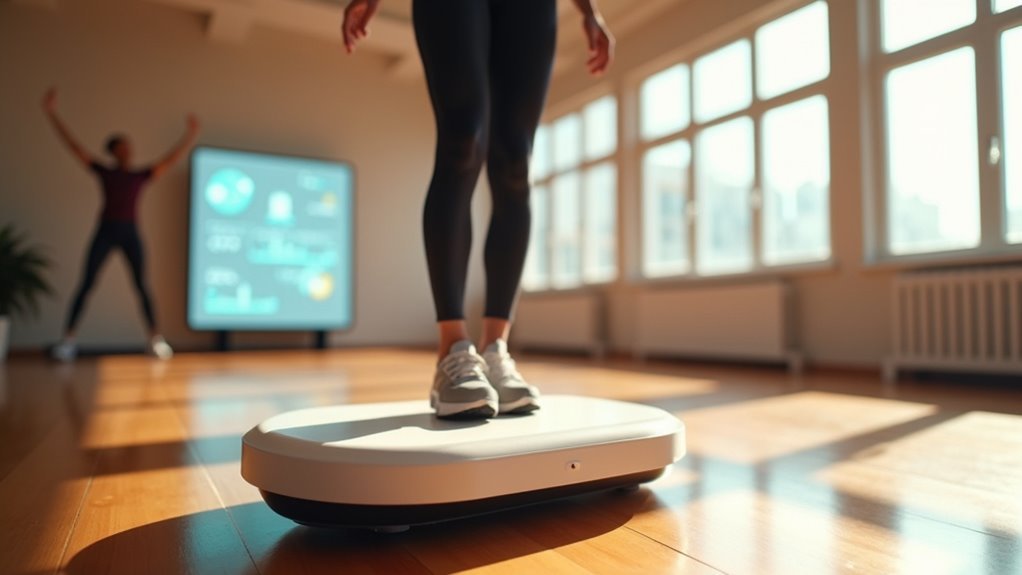
Real-time feedback systems revolutionize balance training by delivering instant performance data that transforms how you approach fall prevention exercises. You’ll receive immediate metrics about your posture and movements, enabling quick adjustments that reduce fall risk during workouts. These systems assess your dynamic balance objectively, helping you track progress and identify improvement areas.
| Traditional Training | Real-Time Feedback | Your Safety |
|---|---|---|
| Guessing your form | Instant corrections | Confidence restored |
| Slow progress | Measurable improvements | Independence maintained |
| Boring routines | Interactive challenges | Active lifestyle preserved |
Interactive programs enhance user engagement, motivating older adults to participate consistently. By integrating cognitive challenges with balance training, you’ll develop better coordination and awareness. Research shows real-time feedback produces greater improvements in performance metrics compared to traditional methods, considerably lowering fall prevention risks.
Cognitive Challenges That Strengthen Physical Response
When you add cognitive tasks to your balance exercises, you’re training your brain and body to work together more effectively than either could alone. Engaging the brain during balance training creates a holistic approach that strengthens your physical response and coordination.
Combining cognitive challenges with balance training creates powerful brain-body integration that enhances coordination beyond what either approach achieves independently.
Research shows this combination can improve balance performance by 31% among older adults.
Here’s how cognitive challenges enhance your fall prevention training:
- Dual-tasking exercises force your brain to process multiple inputs simultaneously, making real-world navigation safer.
- Unexpected stimulus reactions sharpen your reaction times for emergency situations.
- Memory-based movements create instinctive responses that activate without conscious thought.
This brain-body integration makes your movements more automatic and reliable, greatly reducing fall risk when you encounter challenging situations in daily life.
Evidence-Based Results From Balance Equipment Programs
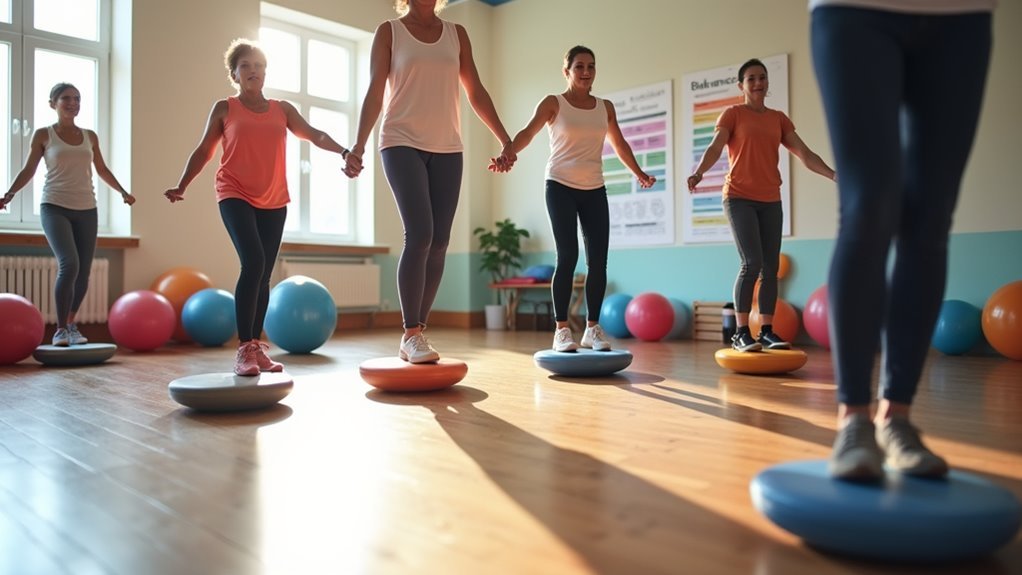
The impressive cognitive benefits you gain from brain-body integration become even more meaningful when you see the concrete, measurable outcomes that balance equipment programs deliver.
Research shows you’ll experience a 30% reduction in falls through enhanced static and dynamic balance. When you participate in evidence-based results programs, you’ll gain increased confidence performing daily activities while reducing your fear of falling.
The real-time feedback from specialized equipment improves your adherence to training regimens. You’ll find that incorporating cognitive challenges with strength training enhances your engagement and motivation.
Most importantly, consistent use leads to sustained improvements in your balance, strength, stability, and overall mobility over time, making falls prevention achievable for older adults.
Frequently Asked Questions
How Does Balance Prevent Injury?
Balance prevents injury by strengthening your stabilizer muscles and improving proprioception. You’ll develop better postural control and quicker reflexes, helping you catch yourself before falling and avoiding situations that could lead to harmful accidents.
Does Balance Training Reduce Falls?
Yes, you’ll considerably reduce your fall risk through balance training. Research shows you can decrease falls by 30% and fall-related injuries by over 60% when you participate in regular, tailored balance exercises.
Which Equipment Is Used to Prevent Falls?
You’ll use wobble boards, balance discs, and stability balls for basic training. HUR SmartBalance provides real-time feedback, while Dividat Senso combines cognitive challenges. Don’t forget resistance bands and weights for strength-building.
What Prevents You From Falling?
Your muscles, inner ear, and vision work together to maintain stability. You’ll stay upright when your brain quickly processes sensory information and coordinates muscle responses to counteract shifts in your body’s center of gravity.
In Summary
You’ll greatly reduce your fall risk by using balance equipment that challenges your stability, sharpens your coordination, and strengthens your core muscles. The real-time feedback helps you correct movements instantly, while cognitive challenges train your brain to respond faster to balance threats. With consistent practice, you’ll develop better proprioception, improved reaction times, and enhanced confidence in your movements, creating a powerful defense against dangerous falls.


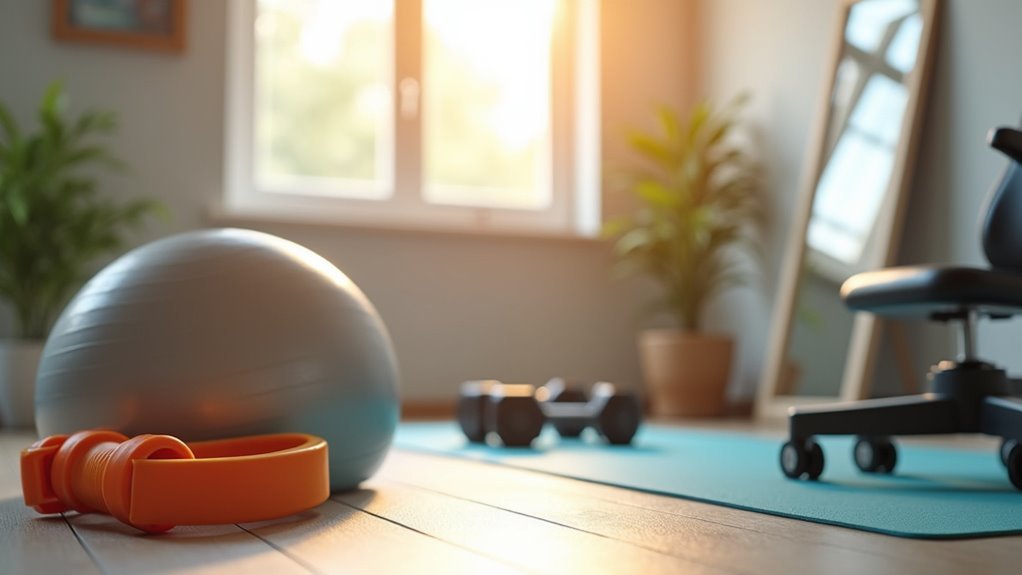
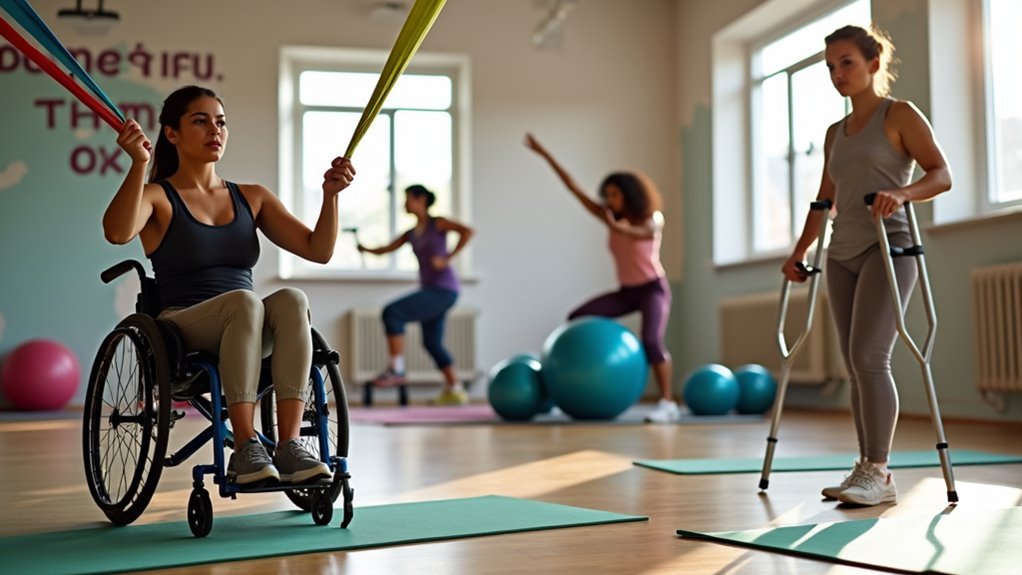
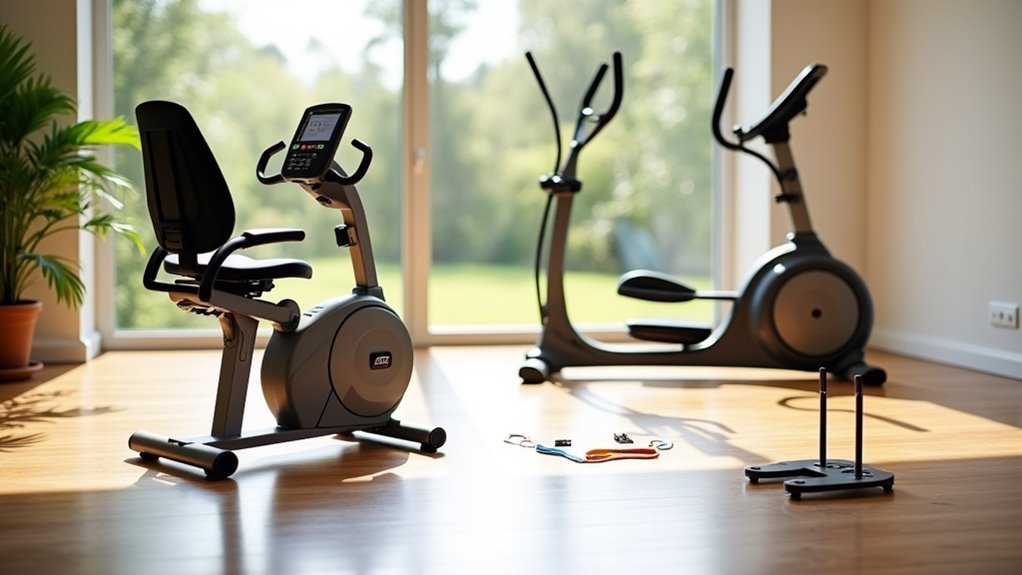
Leave a Reply